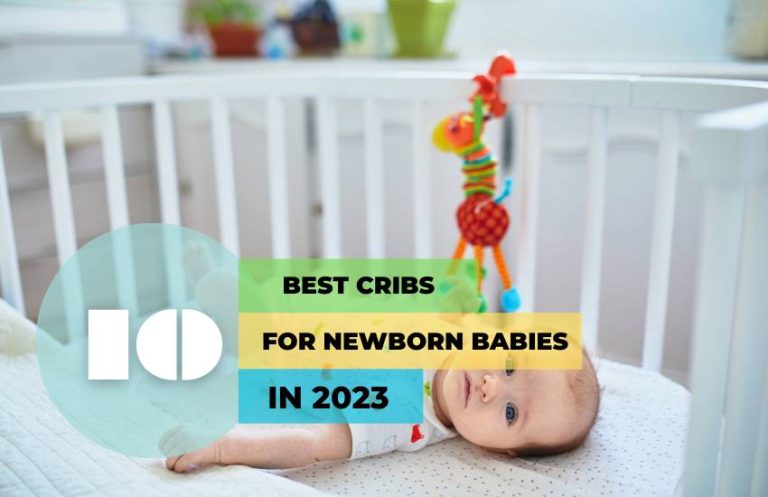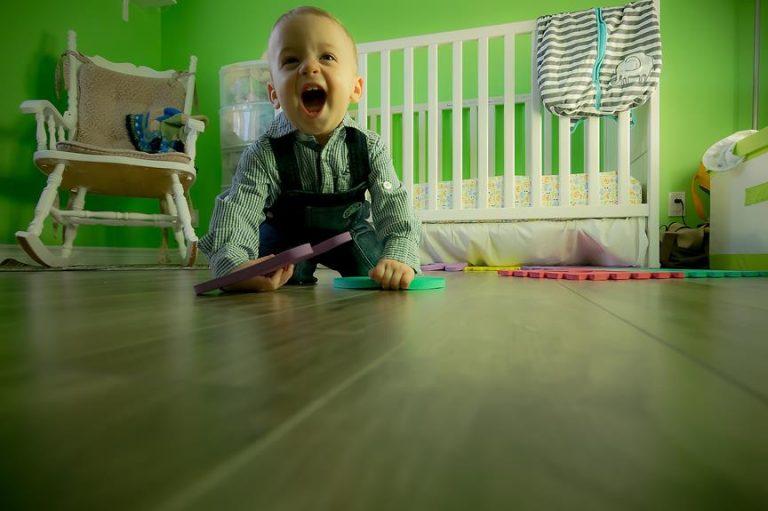When Can Baby Sleep in Crib? Transition to Crib
While many parents may be eager to transition their baby from a bassinet to a crib, concerns about safety and the appropriate timing may arise. In this article, we will address these concerns and provide guidance on when it is appropriate for a baby to sleep in a crib.
We will explore the benefits of a crib, considerations for room sharing versus a separate room, and offer practical tips for a successful transition.
Ensuring a safe and comfortable sleep environment is paramount, and we aim to provide valuable insights to assist parents in making this important decision.
Newborn Sleep Options
Newborns have the option to safely sleep in either a crib or a bassinet. When comparing crib safety to a bassinet, both options can provide a safe sleep environment if the recommended guidelines are followed.
Cribs are larger and provide a larger sleeping space, making them suitable for use until the child is 2.5-3 years old.
Bassinets, on the other hand, are easily movable and provide a smaller sleeping space, making them ideal for newborns up to 4-6 months old.
Room sharing is encouraged for the first few months, as recommended by the American Academy of Pediatrics (AAP), but after 4 months, it may lead to less sleep and unsafe sleep practices.
Transitioning from a bassinet to a crib can ensure a safer sleep environment, and tips for a smooth transition include practicing sleep in the crib with naps and recreating a similar room environment.
When can you move the baby to the crib?
It is important to consider the appropriate timing for transitioning a baby to a crib. Signs of readiness include when the baby can sit independently, push up on their hands and knees, or outgrow the height/weight recommendations on the bassinet. Most babies are ready to transition to a crib between 4-6 months for a safer sleep environment.
The transition process can be gradual, starting with one sleep period in the crib per day and gradually increasing. It is crucial to choose the right crib that complies with safety standards, has a firm mattress, and has no large cutouts on the headboard and footboards. Safety considerations should always be taken into account, such as using a tight-fitting crib sheet and following the American Academy of Pediatrics (AAP) guidelines.
Maintaining consistent sleep associations and a familiar bedtime routine can help ease the transition.
Room Sharing Vs. Baby’s Own Room
When deciding whether to have the baby sleep in their own room or to room share, families must consider personal preferences and safety recommendations. Here are some transitioning considerations, safety guidelines, and room-sharing benefits to help make the decision:
Transitioning considerations:
- Determine when the baby is ready for the crib based on developmental milestones.
- Ensure the crib provides a safe sleep environment.
- Gradually introduce the crib for naps before transitioning to nighttime sleep.
Safety guidelines:
- Follow AAP recommendations for safe sleep practices.
- Use a firm mattress and fitted sheet.
- Keep the crib free of blankets, pillows, and stuffed animals.
Sleep environment:
- Consider factors such as noise levels and temperature in the baby’s own room.
- Room sharing can provide a sense of security for both the baby and the parents.
Room sharing benefits:
- Easier access for nighttime feedings and soothing.
- Promotes bonding and reassurance for the baby.
- Allows for close monitoring of the baby’s well-being.
- This may result in improved sleep for both the baby and the parents.
Ultimately, the decision between room sharing and the baby’s own room depends on parental preferences and what promotes a safe and comfortable sleep environment for the baby.
Why Should You Transition Your Baby to a Crib?
Parents may choose to transition their baby to a crib for several reasons. Signs that it’s time to move the baby to a crib include surpassing the weight limit of the bassinet, the baby fitting snugly in the bassinet, and the baby showing signs of discomfort or restlessness in the bassinet.
Timing-wise, most babies are ready to transition to a crib between 4-6 months. Safety is another important consideration, as cribs provide a safer sleep environment compared to bassinets.
Benefits of transitioning to a crib include a larger sleeping space for the baby and the option for parents to have their own room.
To make the transition smoother, parents can follow some tips such as practicing sleep in the crib with naps, recreating a similar room environment, and expecting a few days of adjustment for the baby.
Tips for Transitioning to a Crib
To ensure a smooth transition, there are several tips to consider when moving your baby to a crib:
- Practice sleep in the crib with naps: Start by having your baby take naps in the crib to get them used to the new sleeping environment.
- Follow the same bedtime routine: Maintain a consistent bedtime routine to cue winding down and signal sleep to your baby.
- Recreate a similar room environment: Try to make the crib’s surroundings resemble the bassinet or the previous sleep space to create a sense of familiarity.
- Expect a few days of adjustment for the baby: It is normal for babies to take a few days to adjust to the new sleeping arrangement. Be patient and supportive during this transition period.
If you find the transition challenging, consider enrolling in online classes that can provide guidance on setting up healthy sleep habits for your baby. These classes can help you establish a positive association with the crib and maintain a consistent routine for a smooth adjustment.
Conclusion
In the journey of a baby’s sleep, transitioning from a bassinet to a crib marks an important milestone. This shift provides them with a safer and more comfortable sleep environment.
By understanding the differences between cribs and bassinets, the benefits of room sharing, and the guidelines for safe sleep, parents can ensure a smooth and successful transition.
With the right tips and strategies, this transition can be a delightful step towards a little one’s growth, just like a butterfly emerging from its cocoon.


